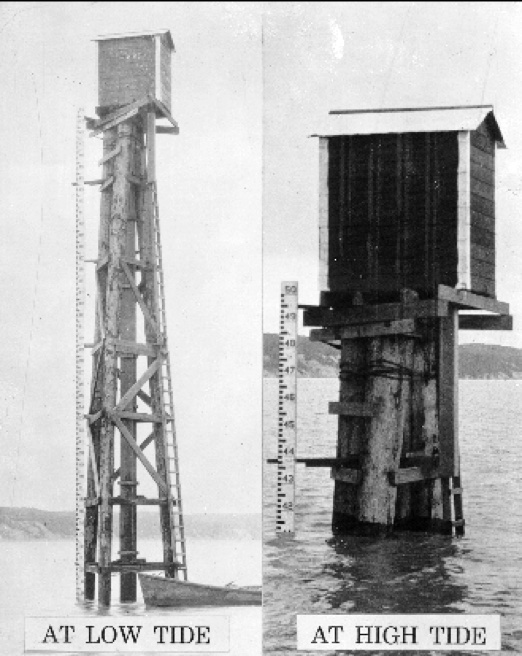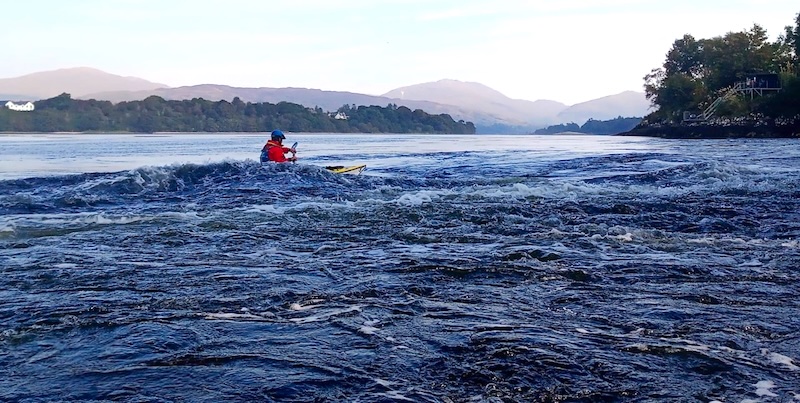Chapter 2 Tides
Understanding the tides is crucial for planning and carrying out safe sea kayak trips.
In some areas of the UK, the falling tide uncovers vast areas of seabed, making some channels unusable and possibly making launching and landing difficult. This can be particularly problematic around the Norfolk coastline and other areas with large shallow sand and mud flats.

Tide gauge near Anchorage, Alaska. The Severn Estuary in the UK has a similar tidal range. Photo: NOAA
The rise and fall of the tides creates flows known as ‘tidal streams’. 4 knot tidal streams are not unusual and some parts of the UK coastline experience 9 knot streams. Paddling against tidal streams can slow progress, or simply be impossible, so being able to predict them and account for them in trip planning is important.

Rough water generated by a tidal stream, Falls of Lora, Scotland. Photo: George Fell.